The government of India introduced the National Smart Cities Mission in 2015 to develop smart cities pan-India, making them citizen friendly and sustainable. It included 100 cities in this mission, to begin with, with the deadline for completion of the projects set between 2019 and 2023.
But how can smart cities leverage open source technologies, and deploy 5G and IoT to accelerate innovation and reach the ambitious targets set under this mission?
A panel discussion on the subject ‘Deploying “5G, IoT and Edge Computing” technologies for SmartCity and Business Verticals using Open Source Platforms’ among industry leaders at a Samsung IEEE event offered some answers.
The prime objectives of creating smart city environments are: optimised decision-making, building infrastructure, and the use of cyber and physical resources to address the challenges in urban areas. However, the large-scale deployment of cyber-physical-social systems using open source has its own set of challenges that require smarter sensing and computing methods, as well as advanced networking and communication technologies to provide better services.
Open source for next-gen networks
Gone are the days when 5G, IoT and edge computing were just buzzwords. In today’s business verticals, these are quite the reality. Open source is shaping large areas of technology. For example, in telecommunications, it is not just a way to foster collaborative research and innovation, but an opportunity to make real change in the telco ecosystem. Open source projects are creating technology that will drive the evolution of the next-generation mobile networks, which is vital as industries move towards the 5G era.
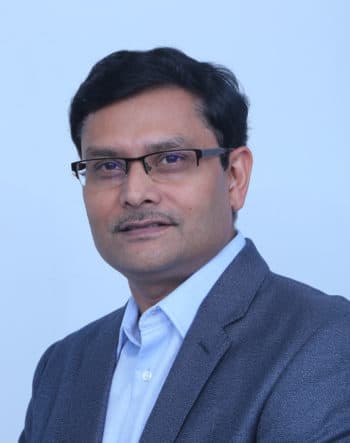
“It is interesting to know that 80 per cent of telecom data is non-differentiated and can be used as open source. Instead of just consuming it, we can use the best it offers,” says Dr Aloknath De, CTO, Samsung India.
The concept of collaborative development on networks and new technologies is not new in telecom. “Samsung uses the Tizen platform to build digital appliances, and Jerryscript from JavaScript is intended to run on a very constrained kind of environment. It also supports IoT and Open Connectivity Foundation,” says Dr De. Moreover, when it comes to 5G communication, he considers Open Radio Access Network Software Community (O-RAN SC) and Open Networking Automation Platform (ONAP) as two big elements. Akraino is also an important element that supports high availability of cloud services, spanning a variety of use cases for artificial intelligence.
Fundamental shift in architecture
Industries are today focusing on product consumption, software architecture, modularity of software network functions, application services, and use of open source, all of which indicates a major shift in architecture.
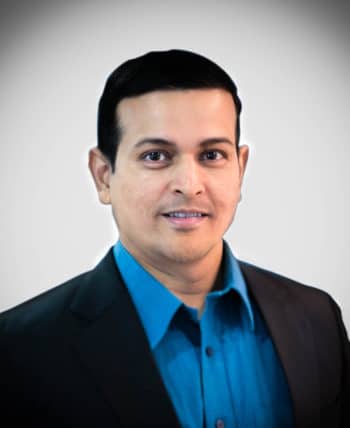
(5G and IoT security), Cisco R&D
Subodh Gajare, lead architect (5G and IoT security), Cisco R&D, feels that nowhere between 2G and 4G, did we witness such major architectural shifts. “When we look at 5G on a silo compared to the three previous generations of mobility, we see a fundamental shift in architecture in the way network components are looked at, and the security element has been blown apart.”
He adds, “We are witnessing three major architectural shifts, and this is the place where 7 trillion devices, 7 trillion people and all these economies of scale will be met. And that’s why it’s both a huge competitive advantage and a huge secondary challenge as well.”
Innovation in the open network ecosystem
Gnanapriya Chidambaranathan, AVP and senior principal architect, Infosys, says that we are looking towards how open networking is bringing in innovation, embracing the cloud nativeness as well as dynamic orchestration and automation of network slices, bringing closed loop assurance and exposing open APIs for ecosystem integration.
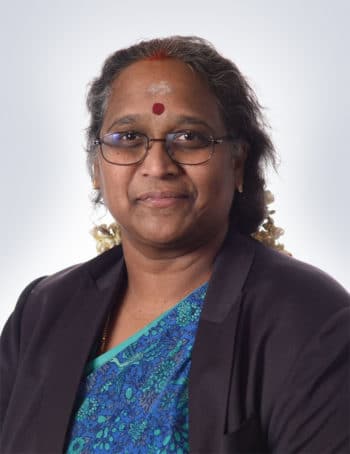
AVP and senior principal architect, Infosys
For instance, all of us are connected remotely and enterprise workloads are moving from the data centres to the edge. Similarly, when we talk about the industry verticals, whether it is manufacturing or Industry 4.0, a lot of low latency analytics and insights are required. And from a consumer perspective, users can watch high definition, video live streaming and other immersive experiences.
“There are a variety of possibilities that exist today. Open source brings in that openness and helps in driving innovation and cost efficiency,” she says.
RANs enable physical access to devices and were mostly developed as complete proprietary solutions. This means that it was difficult for innovations to happen at the same pace as the rest of the market.
“We are looking at the The Linux Foundation solution set, ORAN ecosystems, open stack and Kubernetes solutions. There is also the Open Networking Foundation (ONF), where there are a set of open source platforms that exist. We are also looking at how DLT can be leveraged for smart contracts as the business models and monetisation is also important,” Gnanapriya states.
Creating a revolution
Linux and Android are a part of our life already. According to experts, they are playing a key role in the next phase of revolutionising the data centre market. For instance, a lot of infrastructure for hyperscalers like Google and Facebook runs on open source.
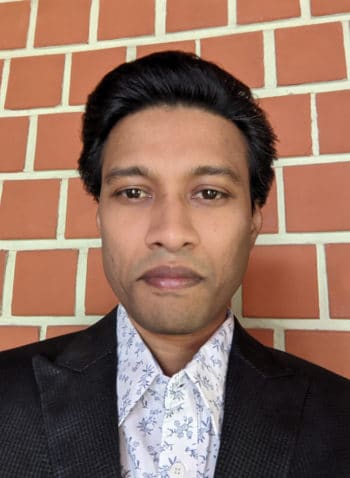
“We may not be aware that there are companies selling commercial networking products using open source to the data centre and cloud market. The next phase of the data centre evolution is the orchestration with OpenStack and Kubernetes,” says Abhijit Chaudhary, founder and CEO, Niral Networks.
Acknowledging the pivotal role of 5G, IoT, edge and telecom, Chaudhary says there are multiple initiatives for open source disaggregation happening in 5G for RAN, core and transport. “There have been few smaller commercial 5G deployments using open source, but I think 5-6 years down the line, there will be a huge momentum towards open source based commercialisation in the telecom and private cellular networks for industrial/IoT use cases,” he adds.
Disaggregating components
When 5G came into existence, the thought process of disaggregating the components had already begun. With the arrival of open RAN and the disaggregated components talking to each other on open interfaces, the possibility of a lot of telecom applications in the RAN and transporting domains to become smaller components (that could be handled in isolation), opened up.
“These are components that you can innovate upon and bring a lot of value into before you put them together to create a larger solution. So, from the service provider perspective, these are great developments,” says Manish Gangey, SVP and head, R&D, Airtel. He points out that one of the big problems in India is that we have a low ARPU (average revenue per user) in comparison to any other place. “So the way we need to build our own infrastructure has to be thought about differently for any company to be profitable.”
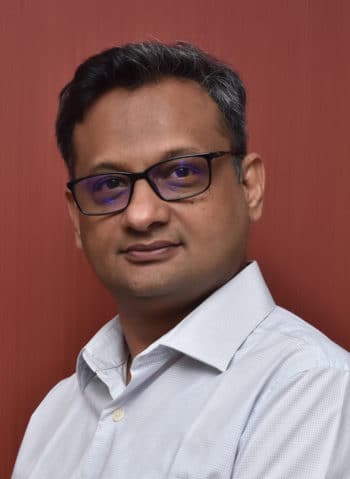
Open source fits beautifully in an association like this by reducing the overall cost of ownership, accelerating innovation and bringing in many more players into the market. “I look at open source as a great enabler for the Indian ecosystem to develop,” says Gangey.
Transforming industries
Dr Inder S. Gopal, CEO, Indian Urban Data Exchange, says there is evidence that open source can transform an industry. “If we look at data centre networking at the time of SDN and NFV, it was dominated by proprietary solutions. If we now look at the data centre and the boxes that are deployed in it, 80 per cent are white box solutions running, for the most part, open source software. The open source commercialisation has been driven by the availability of open white box hardware alternatives and mature open source offerings, and that has really transformed the data centre,” he explains.
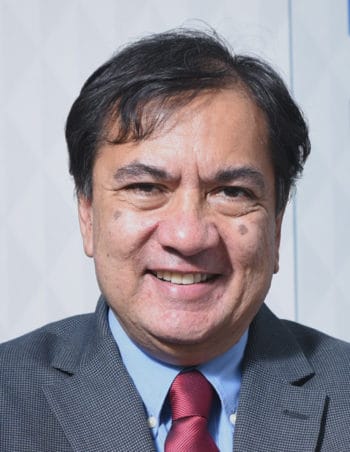
He expects to see a similar kind of transformation in the telco space as well, though it might take a little bit longer. “I think telcos always move a little bit more slowly than other sectors, but it definitely will happen and there is evidence that it can happen,” Dr Gopal says.
Driving factor: Cost-effectiveness or competitiveness?
O-RAN based deployments are becoming increasingly popular. For an operator, the cost-effectiveness may be of prime importance, but there is also competition because of the low ARPU; hence, the infrastructure cost has to be matched in line with that. The question is: Are the cost reductions or the vendor lock-ins driving the popularity of open source? The fact is, reducing infrastructure costs will also bring in more competitors.
Disaggregation is happening; OEM layers are getting middleware and many more things. So if we split the monolithic architecture, systems integrators are needed to play the role, leading to a lot more challenges.
“But the driving factor in open source is the cost of the solution and the diverse supply chain. They are pretty interrelated. I use open source and it will be cheaper, because there is nobody to charge me the royalty or the fees. We are not saying that the source is going to come cheap. We are not saying by any means it is free or it is not free. Open source is not free — it is a very common term that we can clarify all the time,” explains Gangey.
Open source is the method of getting in more players and fostering innovation. Once you have the vendor lock-in, whatever the requirement, you are dependent on a set of engineers who are catering to 15 different sets of customers across the world having 15 different requirements.
Gangey says, “If my solution doesn’t get priority in my partner’s ecosystem, I am really stuck and will not be able to service my customer. So fundamentally, when you disaggregate, you unlock and remove this lock-in, opening up for more innovation. You deploy the features faster and are able to monetise.”
Cost can be brought down in one way or the other — in the form of efficiency in deployment, with optics or by way of capital expenditures. “It is not as simple as it sounds, but it is evident that whenever you open up things, it basically brings down the overall total cost of ownership (TCO),” he adds.
Gajare says, “The intelligent programmable infra and the architectural building blocks with open source, ONAP, policy, design, creation, dashboarding, external APIs, orchestration, networking, VNS, and infra monitoring – all of this is now a bundled offering.”
While he points out innumerable use cases of ONAP that can design, create, orchestrate and automate everything in 5G, he also tells telco operators to be aware that code repositories are no longer locked in. It’s not just about 10,000 people contributing, but about how the whole wheel aligns to the common cause of the use case.
“I think I can see that balance. A lot of vendors and telcos are working with Telstra, COX, Orange, Charter, Bell, AT&T, for example, and have evolved from lab ONAP networks to ONAP reference architectures. And that epochal shift is a very good science,” adds Gajare.
Specifics on leveraging 5G from core to edge
Various workloads have a variety of use cases and there is sometimes a doubt about how end-to-end service orchestration can happen. These could be wireless networks or CNF/VNF combinations. Going into the specifics of slice orchestration, it can be the core or access. Even in the case of access, there has to be some thought on how RAN automation is going to happen and how to support the real-time or non-real time scenarios.
“When we talk about the services being offered, there are other digital players too apart from the telco specific services. So there should be an idea about how I am going to do the end-to-end telco-cloud orchestration. Bringing in orchestrations and adding edge factors into them will still need a lot of thinking on how orchestration happens from the edge layer and when moving towards the CPE side,” explains Gnanapriya.
Based on the kind of requirements, different kinds of flavours can be easily addressed in an automated dynamic orchestration through these platforms. It gives enormous facilities and capabilities where these solutions can be leveraged. In the Indian context, not just the operational efficiencies, but also from a cost perspective, bringing all these concepts together plays a vital role.
Smart cities stay smart with open source
The smart city concept is gaining momentum with all products coming under a digital shadow. It involves a functional and structural improvement of existing cities by capitalising on information and communications technology to increase the city’s sustainable growth, while ensuring enhanced quality of life for its citizens.
Dr Gopal points out to one of the open source platforms, India Urban Data Exchange, that’s being deployed across the country for sharing data. If the solutions that smart cities are deploying are looked at, there is a layer of software — a middleware layer, which for the most part is non-differentiated. It allows you to find data and provide access to controls, he explains.
“Companies work together to create a common open source platform. This has a significant role in the smart cities space. Everyone understands, and can deploy and support, but one has to focus on creating value on top,” says Dr Gopal.
Bridge gaps with an organisational construct
India has a pretty ambitious initiative of building 100 smart cities, and this project has been going on for about six years. However, it has not moved quickly and the results have not been as dramatic as expected initially.
“It’s because a lot of data — records, videos, etc — are being collected in these smart cities, but they sit right at the silos or closed proprietary platforms without any well-architectured interfaces,” says Dr Gopal.
It is very difficult for someone who has an innovative idea to get access to this data or even understand what data is available. Just suppose you want to build some kind of emergency response system within a city and would like to take data from the police and fire departments, as well as hospital services. Right now, that is not possible in these cities as these departments are working on completely different systems that have no correlation. Common application programming interfaces (APIs) help in bridging this gap, creating a platform that connects the systems together and brings the available data into a common format.
Dr Gopal explains, “This is a prime example where open source can play a role. I believe that anything that is being created for the public using public funds should be open source. It should be done as a collaborative project where multiple parties can work together. We have tried to create a model that is open source and have also created the organisational construct. So, different parties can contribute code and create the governance model for an open source project. This takes a lot of effort and, very often, it is really difficult to maintain and manage because there are always going to be conflicts.”
Collaborate in the middle layer: He adds, “What we have done is disaggregate the deployment of smart city systems. Previously, a city would go to a vendor and the latter would build a vertically integrated system, but we now realise that this is not the way forward. We have to split these systems into horizontal layers.”
At the bottom, there are the sensors from different vendors. These can be mixed and matched as cities now have the ability to be vendor-agnostic. Sensors can be purchased, let’s say, from Samsung and then something can be bought from Philips, and the companies can compete against each other at that level. The idea really is innovation below at the data collection level and then innovation at the application level. “Create applications and services on top. Collaborate in the middle to maximise the availability and involve more players,” Dr Gopal adds.
Bringing cross-industry solutions together: The smart city construct is similar all across the globe, and the focus is on how cross-industry solutions can be brought together and automated. “For example, how can we support factories of the future and bring in these technologies together, helping in the automation, in the right kind of connectivity, and in bringing insights so that the operations efficiency can be improved,” Gnanapriya opines.
Then there are the surveillance, safety and security solutions. As an example, in the oil and gas industries, there seem to be a lot of opportunities for these solutions, but there are challenges in accessing or processing them in real-time. “It is important to think about how to bring all the partner ecosystems together in an operations platform that can help in taking solutions forward,” she adds.
Work towards forming a global registry: Gajare says, “We have a few open source smart city platforms (for Pune, Jaipur and Navi Mumbai), and we are also trying to do something for the digital freight corridor operation now. But we need a registry for digital public goods, a place where all this data can be exchanged at par with the right security levels and context.”
“Having a global registry for smart cities, or even just for the 6000 odd cities in India, would be nice, and that is solely missing as one of the key agenda items.”
Improve edge computing capabilities: There are two types of edge — user edge and service provider edge. And the user edge may be either the microcontroller based or gateway systems. There is a focus on creating network infrastructure that may be a private network, especially to enable edge computing. Experts warn that you may be forced to enhance edge computing in future solutions.
Chaudhary says, “Smart factories and rural connectivity need a private network in a lot of cases. We are trying to build an open network operating system that needs three components — the radio, transport and the core. We can create a concrete edge upfront core network for 5G using open source. It is all about collaboration, about more competitors coming and collaborating.”
Open source drives standards: Dr Gopal reiterates the relationship between standards and open source: “The way standards get developed is by creating open source reference implementations. There is a kind of cycle between formal standards and implementations. And in many ways, open source drives those standards.”
A task force in the Bureau of Indian Standards is looking at the feasibility of 5G and open source for 5G, as well as multiple segments, such as the access and applications space, to check on the maturity of open source. “But the objective really is to take it forward and go from a paper study to actually do a set of reference implementations in each of these areas,” says Dr Gopal.
Developing the culture of contributions: India is known for its software programming, but when it comes to open source, the country is still in its infancy. Gajare feels the time has come for creating something similar for the whole 5G ecosystem, where everyone who is a student, academician or research scholar can contribute. India has the mental muscle and now it’s just a matter of working with the necessary frameworks that align to solve something tangible.
“We have huge talent in India. Getting associated with any open source project of interest will help. Students can start with bug fixes, and then contribute to features. There are a variety of opportunities available at any layer,” says Gnanapriya.
Experts believe that we must develop the culture of contributions rather than looking at reaping immediate benefits. “I think we need to really grow our thought process and nurture this culture, also by busting a lot of myths around it. If you are contributing something to open source, it is not your intellectual property. Let’s build this culture of contributions,” Gangey concludes.
Panelists
|




